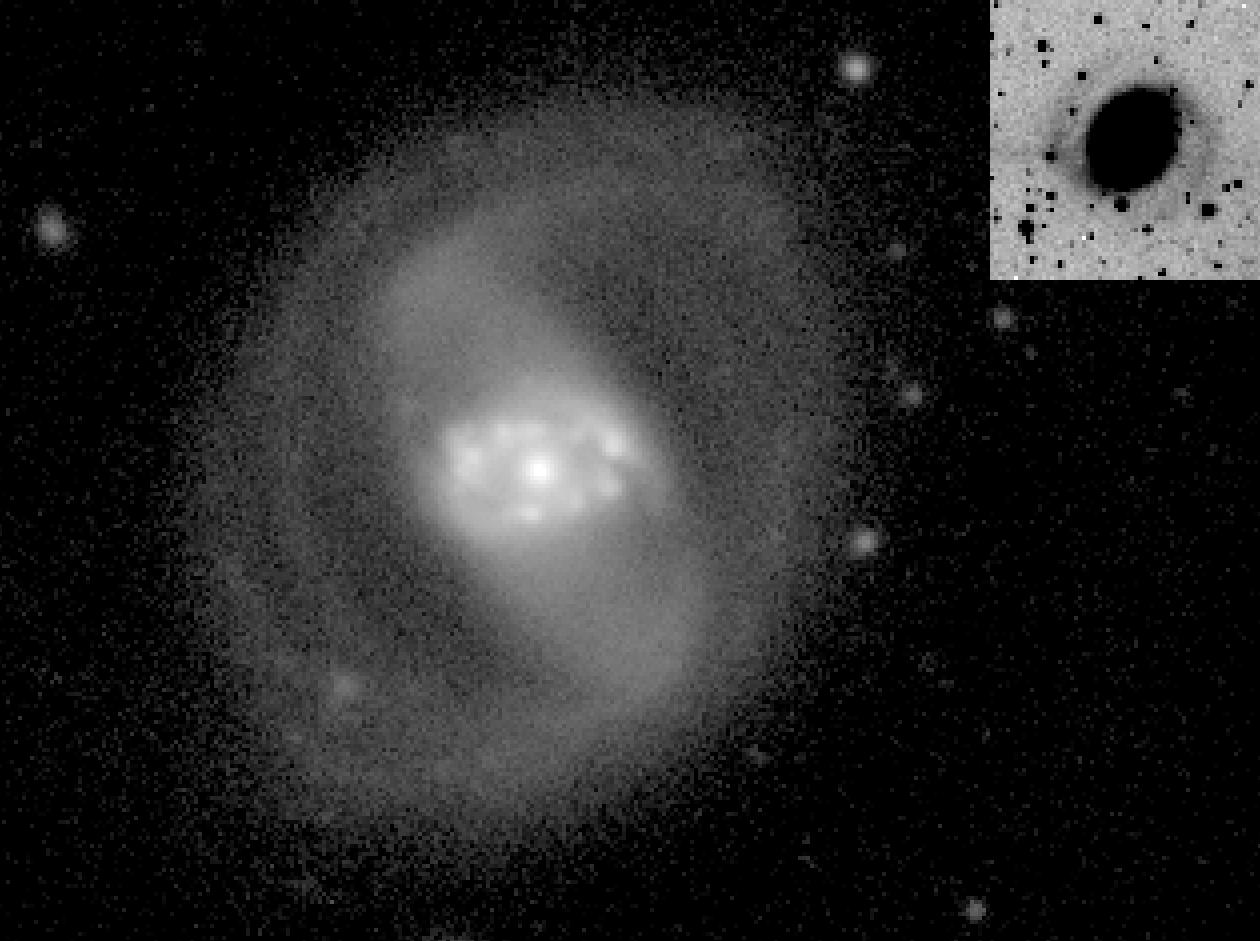

De Vaucouleurs Atlas Type: (R1')SB(rs)a
Filter: B
Telescope: CTIO 1.5-m
North up , East left
Field Dimensions: 2.3 x 1.7 arcminutes
RC3 Type: (R)SB(r)0/a pec
RSA Type: -----
Surface Brightness Range Displayed: 19.9-25.5 mag per square arcsec
Absolute Blue Magnitude: -20.5
De Vaucouleurs Atlas Description:
This nearly face-on early-type barred spiral is the prototype of misaligned bar-inner ring galaxies. The structure includes a strong, pointy oval rimmed by a well-defined inner pseudoring made largely of two thin spiral arms. Two very faint additional arms break from this zone (insert) and form an R1' outer pseudoring slightly elongated perpendicular to the major axis of the oval. It is clear from the shape of the outer pseudoring that the galaxy is nearly face-on, yet the prominent bar crosses the inner pseudoring at an angle of 60o. Thus, the bar and the inner pseudoring /oval are misaligned intrinsically by 60o, a rare phenomenon (Buta 1995a). The misalignment has been kinematically confirmed by Buta, Purcell, and Crocker (1995).
To add to the interest of this remarkable galaxy, a spectacular nuclear ring of bright blue knots encircles the nucleus. This feature, which shows well in the color index map and which lies wholly within the bar, is the largest (5 kpc diameter for a distance of 60 Mpc) and most intrinsically elongated (b/a~0.5) nuclear ring known (Buta and Crocker 1993a; Buta, Purcell, and Crocker 1995). Weak dust lanes appear to cut into the ring on both sides of its major axis. The HST image of the nuclear ring is from Buta, Byrd, and Freeman (1999), who showed that several of the knots are ``super star clusters ", having absolute visual magnitudes brighter than -14.
The cause of the bar-inner ring misalignment of ESO 565-11 is unknown. One possibility is it represents a galaxy that had a previous bar episode that made the inner pseudoring , oval, and outer pseudoring , but which has accreted new gas and regenerated its bar. This bar has re-emerged out of alignment with the old oval perhaps because of a different pattern speed . The bar has not yet had time to form strong leading dust lanes , but the accreted gas has collected into a brand new nuclear ring that still has its initial shape. It is expected that such rings would shrink and become more circular with time, as indicated by numerical simulations (e.g., Schwarz 1984a; Simkin, Su, and Schwarz 1980; Regan and Teuben 2003).
Another possibility is that that the main spiral in ESO 565-11 is simply a naturally-occurring mode whose pattern speed is slower than that of the bar. This was demonstrated using n-body models by Rautiainen and Salo (2000).